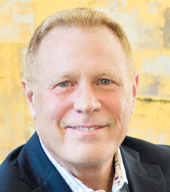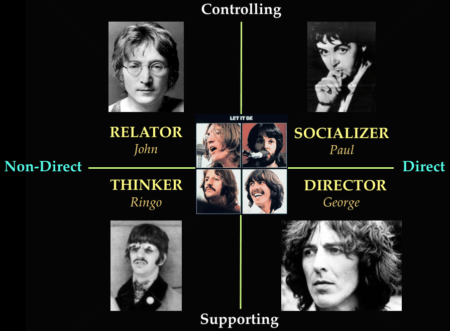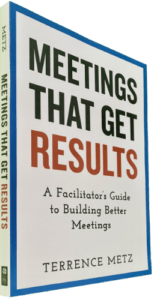Staying relevant and compelling when you facilitate multiple generations presents significant challenges.
Problems develop when meetings include different mindsets, communication styles, and personal preferences. Scheduling, work patterns, and technology intensify friction. Teams are ever-changing and often cross time zones and cultural boundaries. A servile attitude provides you with the simple secret when you facilitate multiple generations — all types of people — because one trait, common to all, is that people would rather be asked than be told.
Traditional stereotyping needs to be avoided, but frequently suggests that . . .
- Baby Boomers (born between 1946 and 1964) remain competitive,
- GenXers (born between1965 and 1977) exhibit skepticism, and
- Gen Yers (aka ‘millennials’, born since 1978) like technology
Whether you prefer Meyers-Briggs (MBTI), DISC, eColors, or others, most agree that not everyone thinks alike.* Dare to compare:
- Some focus on differences while others focus on similarities.
- Some follow logic while others are guided intuitively.
- A portion looks at the risks while others focus on the benefits.
- Some require structure while others prefer independence.
- Some are influenced by language and others by graphics and visual displays.
(Sensible Humor . . .)
By the way, our favorite (only half-seriously) personality typing remains the Beatles’ “Let It Be” album. After all, why else would they be arranged in the clockwise order shown?
While servility will help you facilitate during a meeting, embracing the following preparatory considerations will help solidify your chances of meeting success:
- Anticipate a variety of personality types and learning styles
- Be careful not to stereotype based on appearances and comments
- Don’t overgeneralize groups based on individual character traits
- Prepare as if every stakeholder plans to attend your meeting
As professional facilitators, consider the following suggestions that will improve your ability to facilitate multiple generations, and all types of people, all of the time.
- Appeal to the “Zen” of the experience. Use break timers with music. Provide and build graphical support to complement the narrative world. Remember, we facilitate ‘meaning’, not words. Meaning can be captured with illustrations, icons, and numbers—in addition to words. You can use the Creativity Tool or Coat of Arms anytime you need consensual answers to questions.
- Be flexible and willing to adjust and accommodate participant constraints such as timing and availability. When a participant runs into an unexpected personal “issue”, let’s do what we can as a group to show support and respect for that person, rather than charging ahead. Decision quality demonstrates that a complete answer is better than a quick answer (see Daniel Kahneman).
- Both remain and stress your content neutrality. Stop judging (even cheerleading), making comments about content, and avoid using the first person singular, especially the word “I.”
- Do not let one person or group dominate the contributions. Prevent “Broken Records” by writing down their contributions. Prevent scope creep by asking precise questions. Avoid DUMB questions (Dull, Ubiquitous, Myopic, and Broad).
- Embrace an icebreaker activity to get everyone contributing sooner. Likewise, anticipate and plan for additional team-building activities as appropriate. Make it easier (facilitere) for your participants to enjoy and value one another. Similarly, prepare some quick exercises (eg., Man in the Moon) that prove “nobody is smarter than everybody.”
Keep participants focused on “what DONE looks like” rather than HOW it gets done.
- Nobody wants more meetings. Nobody wants longer meetings. And NOBODY wants more, longer meetings.
- Keep people moving around. Supplement breakouts with ergonomic “stretching” every thirty minutes. Take breaks every 60 to 75 minutes so that people stay off of their electronic leashes, knowing they will have frequent and ample time to reply to their electronic mail and messages, all at once.
- Send your participants and executives to facilitation training so they develop an understanding and appreciation of the challenges faced by meeting leaders. There are ample resources invested in “Diversity” training but where diversity appreciation becomes needed most may be found in situations that involve groups, teams, and meetings. Diversity training encourages the appreciation of individuals but does little to increase heterogenous group performance.
- Spend some personal time with your participants and get to know them better. Meeting participants respond better to leaders they respect, and respect must be earned. Formally or informally interview them. Discern their core competencies, concerns, and unique talents, everyone has one you know. (See below from Howard Gardner).
Stress participant equality regardless of tenure or title.
- Demand that participants leave their egos and titles in the hallway. If they cannot leave their titles behind, do not invite them. If they are “senior” and already have an answer, do not have a meeting. Meetings are an ineffective and very expensive form of persuasion.
- Strive to conduct meetings where either everyone is live (face-to-face); or, everyone dials in, including people in the same building or facility. If not, at least place your virtual participants ‘up front’ and call on them first (not last) when seeking participant input. People dialing in become treated like second-class citizens so enforce a protocol whereby everyone, even those attending live, identifies the face behind the voice before continuing.
- Test the quality of your meeting output before adjourning. The worst deliverable from any meeting is another meeting. If you do not know how to test the quality of your meeting output, take an MGRUSH class on facilitation.
- Use breakout sessions liberally by mixing up your teams frequently. People become more conversational in small groups (two to five people) and develop a stronger appreciation for one another. As you sense dysfunction, intervene and take a mentoring approach. Coach your participants about how to treat one another in a public environment. You will discover that more conflict arises around personality types and toxicity than by different age groups.
______
NOTE:
In 1983 an American developmental psychologist Howard Gardener described 9 types of intelligence:
- Naturalist (nature smart)
- Musical (sound smart)
- Logical-mathematical (number/reasoning smart)
- Existential (life smart)
- Interpersonal (people smart)
- Bodily-kinesthetic (body smart)
- Linguistic (word smart)
- Intra-personal (self smart)
- Spatial (picture smart)

Facilitate All Generations — Gardner’s Types
* Please note trademarks associated with Apple Records, Adioma, and personality-typing organizations.
______
Don’t ruin your career by hosting bad meetings. Sign up for a workshop or send this to someone who should. MGRUSH workshops focus on meeting design and practice. Each person practices tools, methods, and activities daily during the week. Therefore, while some call this immersion, we call it the road to building high-value facilitation skills.
Our workshops also provide a superb way to earn up to 40 SEUs from the Scrum Alliance, 40 CDUs from IIBA, 40 Continuous Learning Points (CLPs) based on Federal Acquisition Certification Continuous Professional Learning Requirements using Training and Education activities, 40 Professional Development Units (PDUs) from SAVE International, as well as 4.0 CEUs for other professions. (See workshop and Reference Manual descriptions for details.)
Want a free 10-minute break timer? Sign up for our once-monthly newsletter HERE and receive a free timer along with four other of our favorite facilitation tools.
______
With Bookmarks no longer a feature in WordPress, we need to append the following for your benefit and reference
- 20 Prioritization Techniques = https://foldingburritos.com/product-prioritization-techniques/
- Creativity Techniques = https://www.mycoted.com/Category:Creativity_Techniques
- Facilitation Training Calendar = https://mgrush.com/public-facilitation-training-calendar/
- Liberating Structures = http://www.liberatingstructures.com/ls-menu
- Management Methods = https://www.valuebasedmanagement.net
- Newseum = https://www.freedomforum.org/todaysfrontpages/
- People Search = https://pudding.cool/2019/05/people-map/
- Project Gutenberg = http://www.gutenberg.org/wiki/Main_Page
- Scrum Events Agendas = https://mgrush.com/blog/scrum-facilitation/
- Speed test = https://www.speedtest.net/result/8715401342
- Teleconference call = https://youtu.be/DYu_bGbZiiQ
- The Size of Space = https://neal.fun/size-of-space/
- Thiagi/ 400 ready-to-use training games = http://thiagi.net/archive/www/games.html
- Visualization methods = http://www.visual-literacy.org/periodic_table/periodic_table.html#
- Walking Gorilla = https://youtu.be/vJG698U2Mvo

Terrence Metz, president of MG RUSH Facilitation Training, was just 22-years-old and working as a Sales Engineer at Honeywell when he recognized a widespread problem—most meetings were ineffective and poorly led, wasting both time and company resources. However, he also observed meetings that worked. What set them apart? A well-prepared leader who structured the session to ensure participants contributed meaningfully and achieved clear outcomes.
Throughout his career, Metz, who earned an MBA from Kellogg (Northwestern University) experienced and also trained in various facilitation techniques. In 2004, he purchased MG RUSH where he shifted his focus toward improving established meeting designs and building a curriculum that would teach others how to lead, facilitate, and structure meetings that drive results. His expertise in training world-class facilitators led to the 2020 publication of Meetings That Get Results: A Guide to Building Better Meetings, a comprehensive resource on effectively building consensus.
Grounded in the principle that “nobody is smarter than everybody,” the book details the why, what, and how of building consensus when making decisions, planning, and solving problems. Along with a Participant’s Guide and supplemental workshops, it supports learning from foundational awareness to professional certification.
Metz’s first book, Change or Die: A Business Process Improvement Manual, tackled the challenges of process optimization. His upcoming book, Catalyst: Facilitating Innovation, focuses on meetings and workshops that don’t simply end when time runs out but conclude with actionable next steps and clear assignments—ensuring progress beyond discussions and ideas.



